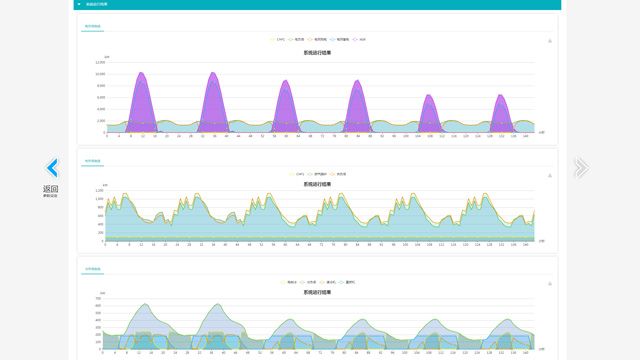Developing Renewable Energy Technologies to Mitigate Climate Change Using MATLAB and Simulink
Scientists and engineers use MATLAB® and Simulink® to integrate solar, wind, and other sources of energy into the grid. These renewable energy sources help reduce dependence on fossil fuels and present unique opportunities for energy simulation, forecasting, and the use of distributed energy systems. See five examples of how engineers take advantage of these opportunities, and how you can apply the same tools and techniques in your own projects.
Distributed energy systems not only make it easier to increase the use of renewable energy sources, they also provide a way to reduce dependence on large, centralized power stations. In order to maximize reliability, power output, and investment returns, these systems must be carefully planned and designed.
Engineers at Shanghai Electric worked with researchers from the Lawrence Berkeley Laboratory at the University of California, Berkeley to develop a distributed energy system planning and design platform that estimates payback periods, cash flows, and internal rates of return based on time-series weather data, energy price trends, available government subsidies, and other factors. Hundreds of users, both inside and outside Shanghai Electric, currently use the platform to identify optimal distributed energy system designs.
Learn More About System Planning and Design
On the Hawaiian island of Lanai, a 1.2 megawatt photovoltaic (PV) solar farm helps fulfill a key goal of the Hawaii Clean Energy Initiative: meet 70% of the state’s energy demand with clean energy by 2030.
Before bringing the solar farm online, Maui Electric worked with Sandia National Laboratories to ensure the PV system would operate reliably and efficiently alongside existing diesel generators that also supply the island with electricity. Sandia engineers used Simulink and Simscape Electrical™ to model the supervisory control systems, PV arrays, power inverters, batteries, conventional generators, and system loads that make up the Lanai microgrid. Once the models were available, they ran simulations to evaluate configuration options, assess control strategies, and identify the proper size for the microgrid’s energy storage subsystems.

Learn More About Microgrid Simulation

In Canada, wind energy has been the largest source of new electricity generation for more than 10 years. Engineers must fully understand how a new wind farm will perform before adding it to the grid. To accurately predict performance, they need to model the control system and power output of a single turbine, the aggregation of dozens of turbines into a wind farm, and the interaction of that wind farm with the larger network.
Engineers at Hydro-Québec built models in Simulink to represent individual turbines as well as entire wind farms. They use these simulations to forecast power output, plan the integration of wind farms into the grid, and ensure reliable operation of the overall power system.
Learn More About Grid Integration
The South Korean government, as part of its Korea Renewable Energy 3020 Plan, has set a goal of generating 20% of the country’s energy from renewable sources within the next 10 years. The plan requires introducing multiple distributed energy resources (DERs)—such as solar farms, wind farms, and energy storage systems—into the grid, which can be destabilizing due to the difficult-to-predict power generation profiles of renewables.
Virtual power plants address the challenge of incorporating multiple independent DERs by combining them into a single generation profile. VGen used MATLAB to create and deploy a standalone Optimization/Trader system that included an AI-based forecasting model for renewable energy production as well as optimization modules to maximize profits in energy markets.

Learn More About Virtual Power Plant Development

One way to accelerate the adoption of renewable energy sources is to ensure their economic viability. Variations in local wind speeds make wind farm production and financial forecasting challenging.
EDP Renewables North America uses MATLAB to generate accurate revenue predictions and revenue-at-risk projections by combining production estimates with forecasts of power prices on the futures market. Analysts at the company used MATLAB to develop automated systems for price forecasting and for portfolio and risk analysis. These systems are used to assess potential wind farm sites and guide both short-term and long-term business decisions.
Learn More About Energy Forecasting
Published 2021
